LCL Injury
Read More >
The LCL is the lateral collateral ligament of the knee. It is one of the strong 4 ligaments that control movement and provide stability to the knee joint. The LCL prevents excessive outward movement, known as varus movement, rotation and hyperextension of the knee.
While it is a less commonly injured ligament of the knee it can be a cause of lateral knee pain. Read about the symptoms, causes and diagnosis of an LCL injury in our related article: LCL Injury.
Strengthening exercises are fundamental for rehabilitation after an LCL injury. After an injury to the knee, some muscles become inhibited and less active and rehabilitation exercises are prescribed to stimulate the muscles to return to normal activity and strength. Other exercises are prescribed to strengthen muscles to help the knee be more stable and therefore less reliant on ligaments for stability.
These exercises should be done only if pain-free to do them, and there should be no lingering pain after completing the sets.
Complete as 3-4 sets of 15 repeats or as guided by your physical therapist.
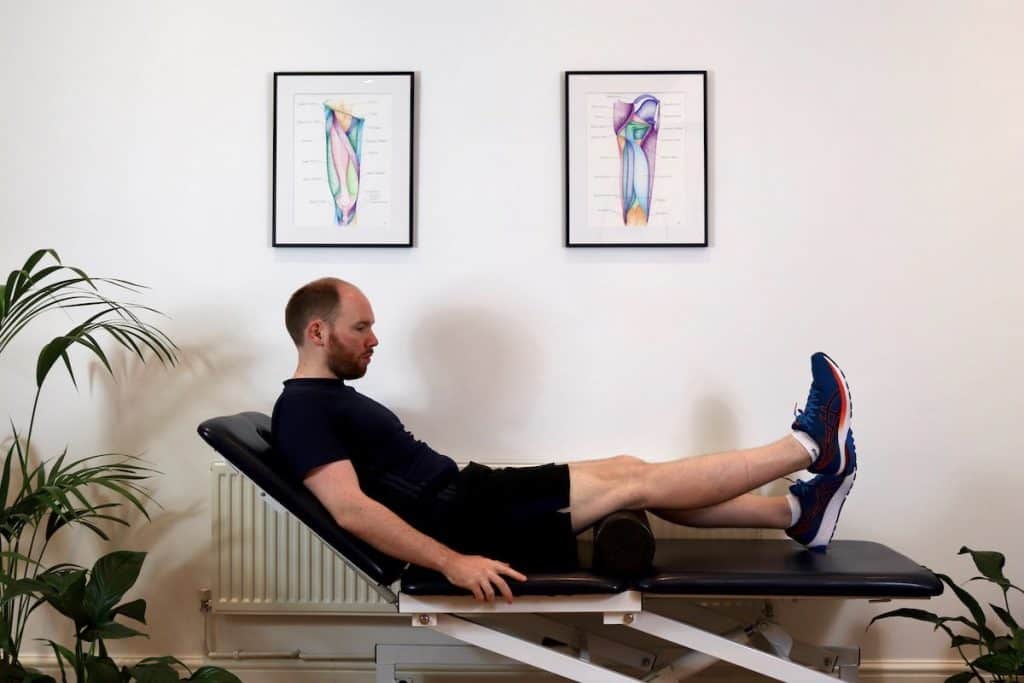
Sit with your knee resting on a foam roller or thick pillow. Push your knee down into the roller or pillow and straighten your knee, lifting your ankle off the floor. Hold this position for 5-10 seconds, relax, and repeat.
You should feel your quadriceps working.
Lying on your back with your legs straight and a ball between your ankles. Squeeze the ball between your ankles and hold for 10 seconds. Release the pressure, then repeat. You can also do a variation with your knees bent in a bridge position with the ball between your knees and squeeze your knees together.
You should feel your adductor muscles working.


Lying on your back with your heels, hip-width apart and your knees bent to about 70º. Tilt your pelvis backwards, to flatten your back against the floor and continue to curl and lift your pelvis off the floor. You can use a band to push your knees out into to work your lateral glute muscles, or a ball between your thighs to squeeze to work your adductor muscles.
You should feel your glutes and hamstring working.
Lying on your side with a resistance band around your ankles. Keep your bottom leg slightly bent to help with stability and a straight top leg. Lift your leg up and backwards into the resistance band.
You should feel your glutes working.
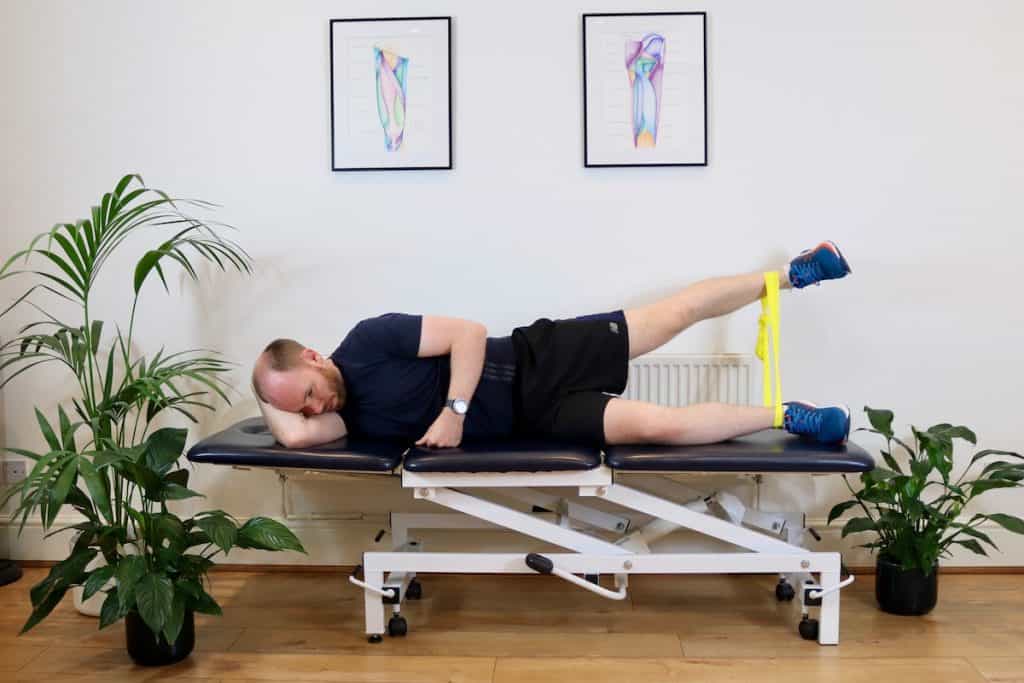
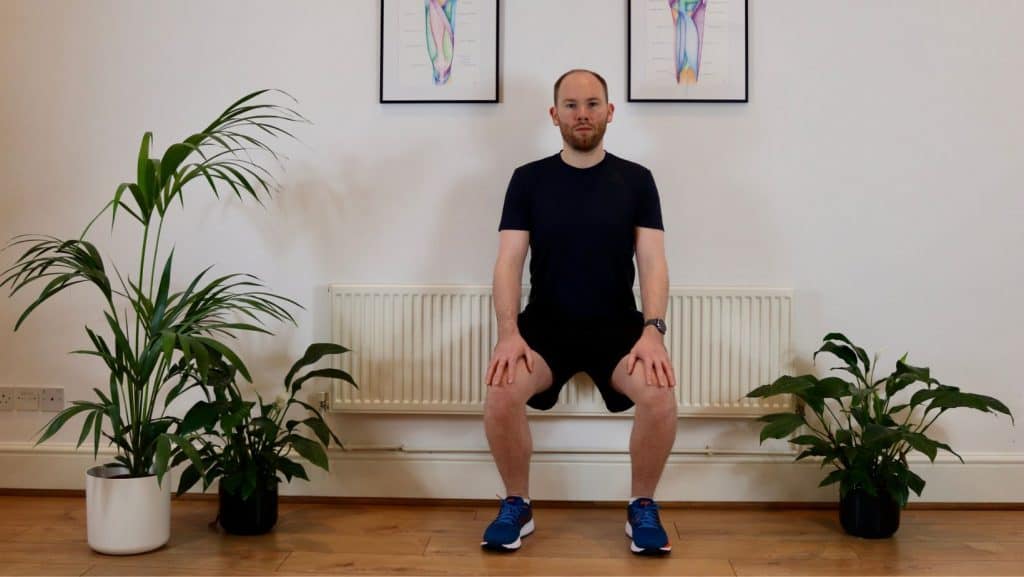
Stand a little in front of a wall. Sit with your back flat against the wall. You want to have your knees above your ankles and bent to 30-60º. The greater the knee bend the harder it will be.
You should feel your quadriceps working.
Stretches are an essential component for rehabilitation from an LCL injury. When there is an injury to the knee, the muscles around the joint can tighten to prevent movement to protect the joint. In the short term this can be helpful but in the longer term can delay recovery.
The following stretches should be held for 45 seconds and repeated several times per day, to keep the muscles supple and loose.
Standing straight, on one leg, bend your knee and take hold of your ankle. Ensure your knees are parallel and your hips are pushed forward and there is no bend at your waist. Pull your ankle closer to your buttocks to feel a stretch across the front of your thigh and hip.
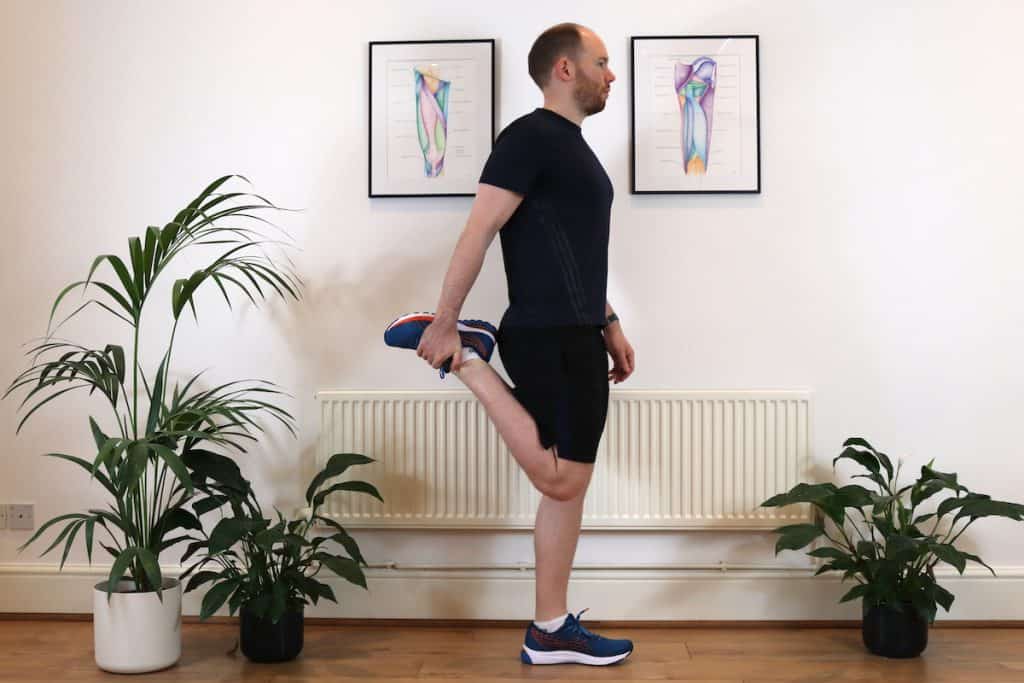
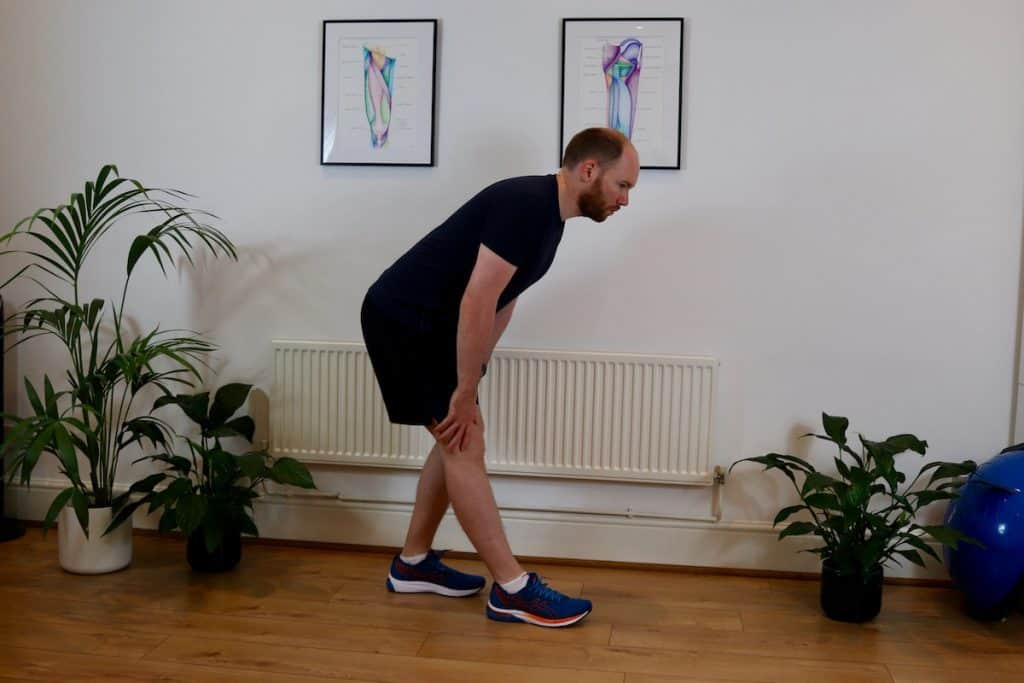
Step forward with one leg and bend from your hips keeping a straight back. Have your hands on the leg that is stepped forward to keep your knee straight, and bend further from your hips to feel a stretch at the back of your thigh. Keep your foot flat on the floor throughout.
Stand with your feet off the edge of a step. Hold onto a wall for balance. Lower your heels down off the step while keeping your knees straight, to feel the stretch at the back of your lower leg.
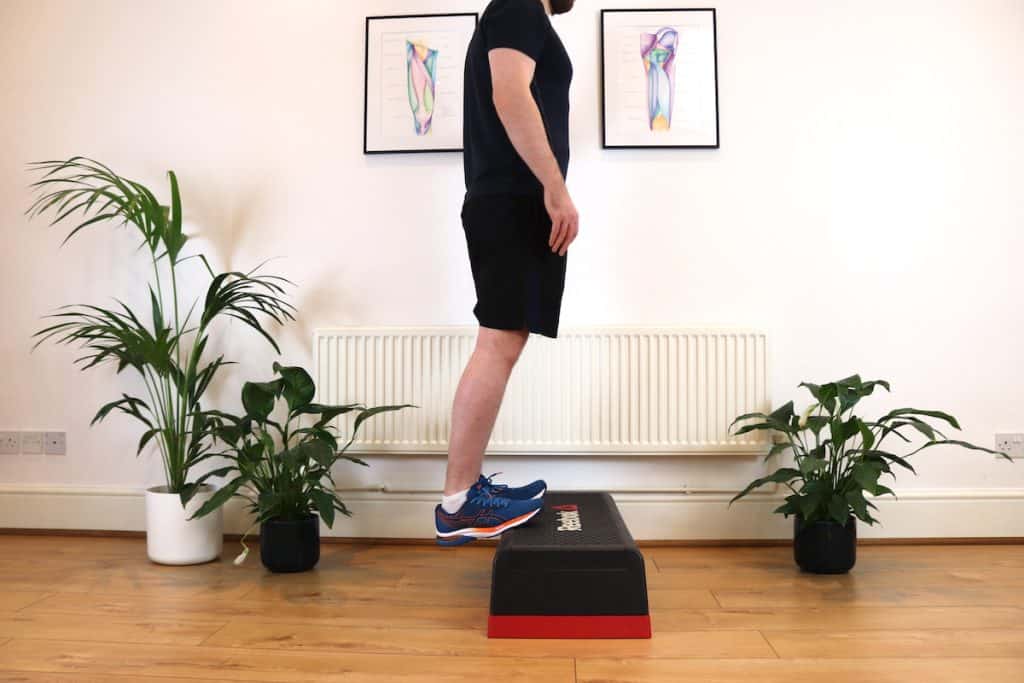
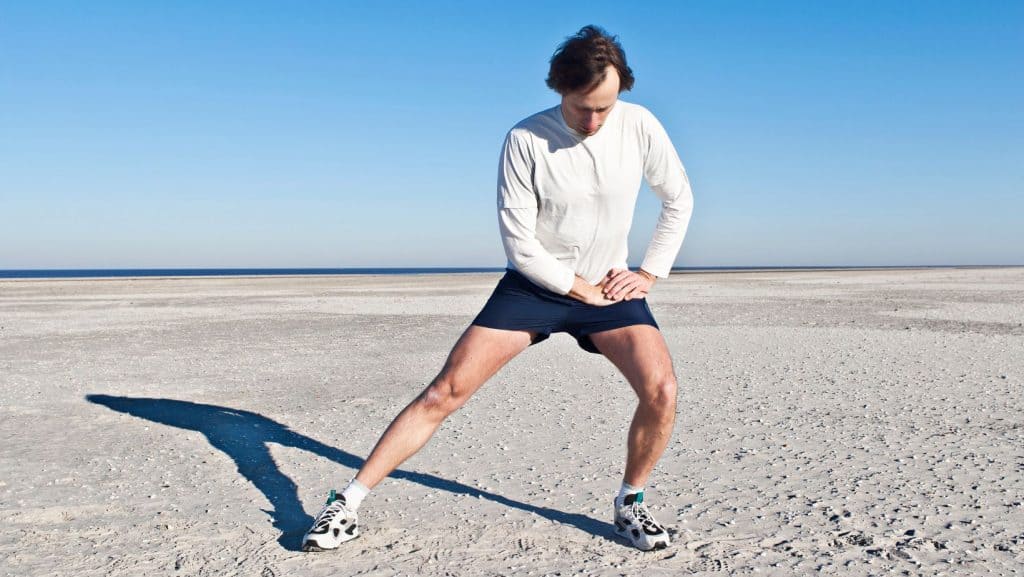
Stand with your feet wide apart and toes pointing forward. Shift your weight towards one leg and let that knee bend. Kee the other leg straight at the knee and feel the stretch along the inside of your thigh.
The LCL ligament protects the knee from excessive lateral, rotational and hyperextension movements. Therefore, when injured, generally, these movements should be avoided and protected.
Sports that involve a lot of lateral movements, especially at speed, such as tennis or football, and high-impact activities should be avoided in the earlier stages of recovery. Usually, straight-line movements that are low-impact such as walking or front crawl swimming are ok to continue. You are best to take specific advice from your physical therapist about what you should avoid.
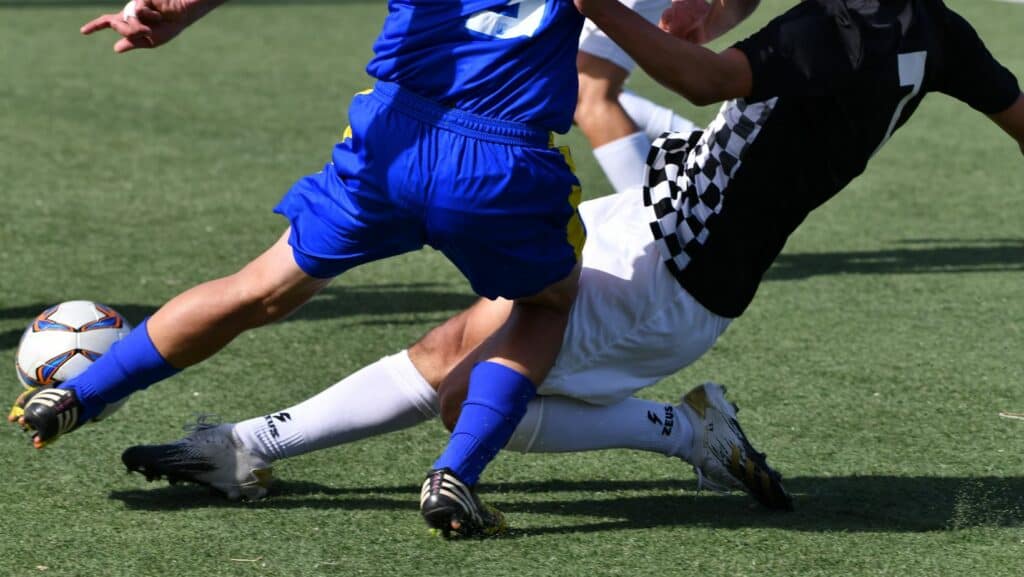
Walking can be painful during the acute phase of the injury. In a grade 1 LCL injury, walking after the initial few days or week, can be helpful to keep mobility in the knee. Some people find it more comfortable to wear some elasticated tape like Kinesio tape, or wearing a compression sleeve.
With a grade 2 or 3 injury, more time completely resting the knee may be needed. And when returning to walking more support can be helpful, such as rigid tape or a structured, hinged brace.
Read more about recommended braces in our related article: Knee Brace for LCL Injury.
Returning to running after sustaining this injury needs to be carefully managed. This is because running is a high-impact exercise, requiring a lot of control at the knee joint. With the guidance of an experienced sports physical therapist, you will be able to determine the correct timing and way to return to running.
Grade 1 LCL tears may be able to return to running after 2-3 weeks depending on their symptoms, strength and conditioning.
While with grade 2 or 3 injuries it may take more than 6 weeks before it is appropriate to return to running. In these cases, very good strength and conditioning and good movement control is necessary to ensure no further stress or damage to the LCL occurs.
This article is written by James McCormack, a Lower Limb Specialist who is an expert in treating Knee Pain.
This is not medical advice. We recommend a consultation with a medical professional such as James McCormack if you are experiencing any of the symptoms discussed in this article. James offers Online Physiotherapy Appointments weekly and face-to-face appointments in his London clinic.